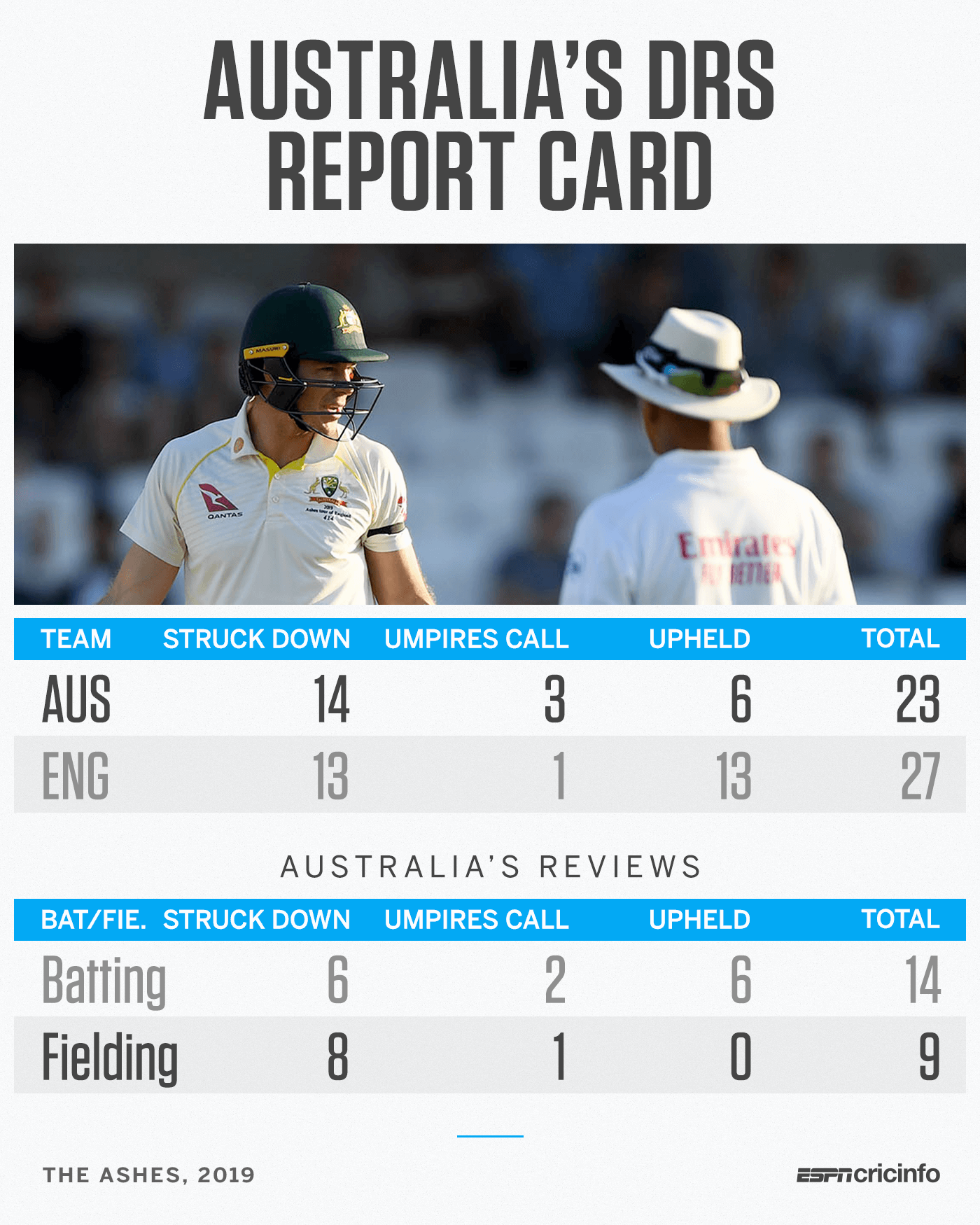The point of any video referee system should be (IMO) to ensure that the correct decision is made. A video referee is pointless if it cannot overrule an on field wrong decision.
The current system in cricket is flawed in that an on field umpire cannot be overruled if they make a mistake unless a captain has available reviews. I appreciate that the point of limiting reviews is to stop the number of frivolous referrals, but the effect is that teams are forced to gamble and in some cases, too many in my book, the incorrect decision gets to stand. I think the system is also flawed because is encourages the players to challenge an umpiring decision.
IMO, rugby union has the best video referee. It strikes a balance between letting the game flow and between making sure the correct result is achieved. It does this by empowering the referees, not diminishing them. It allows the referee to explain what he saw and ask a specific question. There is no limit, it accepts that on any given day there may be 50 contentious issues or one. It empoers the refereee to see assistance to make the right decision, not guess.
Cricket could learn a lot without detracting from the game. First and foremost the DRS system could work on the basis of soft decisions, so that the notion of an umpires call is not lost. If the DRS is inconclusive, then the call goes with the umpire and what they believe the result to be. The umpire would be encouraged to review decisions to confirm accuracy, but ultimately they would have the right to refer, not the batsman, not the fielding captain. Instructions to umpires would be to refer LBW decisions, where there is doubt - e.g., the Cummings LBW shout - could be, "I think it's not out because it pitched outside leg, can you confirm". The check should take all of 2 mins.
Umpires should also have the power to act on frivolous appealing. Some of the Aussie appeals were downright ludicrous today and did nothing but show how desperate they were.
The current system in cricket is flawed in that an on field umpire cannot be overruled if they make a mistake unless a captain has available reviews. I appreciate that the point of limiting reviews is to stop the number of frivolous referrals, but the effect is that teams are forced to gamble and in some cases, too many in my book, the incorrect decision gets to stand. I think the system is also flawed because is encourages the players to challenge an umpiring decision.
IMO, rugby union has the best video referee. It strikes a balance between letting the game flow and between making sure the correct result is achieved. It does this by empowering the referees, not diminishing them. It allows the referee to explain what he saw and ask a specific question. There is no limit, it accepts that on any given day there may be 50 contentious issues or one. It empoers the refereee to see assistance to make the right decision, not guess.
Cricket could learn a lot without detracting from the game. First and foremost the DRS system could work on the basis of soft decisions, so that the notion of an umpires call is not lost. If the DRS is inconclusive, then the call goes with the umpire and what they believe the result to be. The umpire would be encouraged to review decisions to confirm accuracy, but ultimately they would have the right to refer, not the batsman, not the fielding captain. Instructions to umpires would be to refer LBW decisions, where there is doubt - e.g., the Cummings LBW shout - could be, "I think it's not out because it pitched outside leg, can you confirm". The check should take all of 2 mins.
Umpires should also have the power to act on frivolous appealing. Some of the Aussie appeals were downright ludicrous today and did nothing but show how desperate they were.


Comment